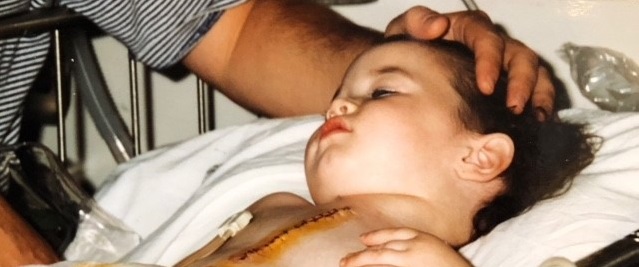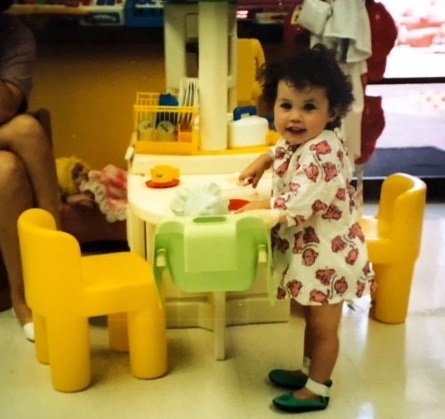From a hole in her heart to the stage: How Tabitha Ellis overcame her heart defect
By American Heart Association News

At 2 years old, Tabitha Ellis was required to wear a face mask over her nose and mouth for 15 to 20 minutes, long enough for medicine and water vapor to flow through her compromised body.
And she had to endure this three times a day, sometimes plugging into an outlet wherever her family was when it was time for her treatment.
“It’s amazing the strength of a kid who doesn’t want that,” said her father, Todd Ellis.
Todd had little choice but to force his daughter to stick with the schedule.
While 8 in 1,000 babies have a heart defect at birth, some heal on their own or aren’t problematic. Tabitha was among the unfortunate. A hole between her two main heart chambers(link opens in new window)(link opens in new window) never closed, causing a myriad of health problems – and logistics issues.
Her family lived on a military base and moved every 10 months to 3 years. They couldn’t find a childcare center that would take Tabitha and her breathing machine, so her mother quit working to care for the girl full time.
Cardiologists monitored her frequently, as Tabitha struggled to grow. At around 2½, doctors noticed a problem in a V-shaped part of the aorta known as the aortic arch. There was an aneurysm(link opens in new window)(link opens in new window), a weakening in her artery that caused it to bulge, likely due to her heart working harder than usual to pump blood.

Doctors in Texas performed a surgery that patched the hole. They also replaced a heart valve leading to her lungs that had been leaking.
Tabitha came out of the surgery a new person.
The quiet girl couldn’t stop talking. The low-energy girl was active and playful.
Great as it sounds, this presented new challenges. Because, at this point, doctors said she was still fragile. She tired more easily than other kids and had to be careful not to get hit in the chest.
“I remember not being able to play outside or have recess,” Tabitha said. “I couldn’t do all the stuff that other kids could do.”
Freed from the shackles of the breathing machine, the Ellis family began living a more normal life, including hiking and camping. Sometimes Tabitha tired and Todd had to carry her on his shoulders; it was a tradeoff he gladly made.
 E
EDoctors finally loosened the reins in high school, clearing her for normal activities unless she experienced problems. That’s all it took for Tabitha. If there was an extracurricular activity she couldn’t do before, she signed up.
- She joined the cheerleading team as their “flier,” the one on top of the pyramid who gets thrown in the air.
- She swam competitively for four years; she ran track for two years, before realizing that her decreased stamina held her back.
- She joined the boys’ lacrosse team, winning the coach’s award for her attitude, improvement and effort.
All was going well until her senior year.
While watching a movie in psychology class, she noticed tingling in her arm(link opens in new window)(link opens in new window). Soon, it extended down the side of her body. She suddenly felt she couldn’t move, like a boulder weighed her down, and she couldn’t talk. While it felt like it lasted for hours, it was only a few minutes.
At the hospital, all indications were that she probably had a mini stroke. But tests showed no evidence of it. There was nothing for the doctors to do but advise her to watch for future symptoms. A decade later, Tabitha is grateful she hasn’t had a recurrence.
Tabitha, now 27, is an actress in New York City, and has worked with composer David Foster and director Garry Marshall.
“I’m not sure she would have done half the things she’s done if not for (her heart problem). It made her fearless,” Todd said. “A lot of kids might not try something, but Tabitha always said, ‘Let’s try it – the worst thing that can happen is I fail.’”
Tabitha’s heart condition taught her that every day is a gift and everybody has their own problems. She’s been volunteering for the American Heart Association since she was 10, helping at runs in her younger years, and speaking at events as an adult. She recently shared her story and advocated for global healthcare access at the United Nations.
“A lot of people are affected by cardiac issues like mine,” she said. “It’s nice to meet others who have similar stories.”
Stories From the Heart chronicles the inspiring journeys of heart disease and stroke survivors, caregivers and advocates.
If you have questions or comments about this story, please email [email protected].





